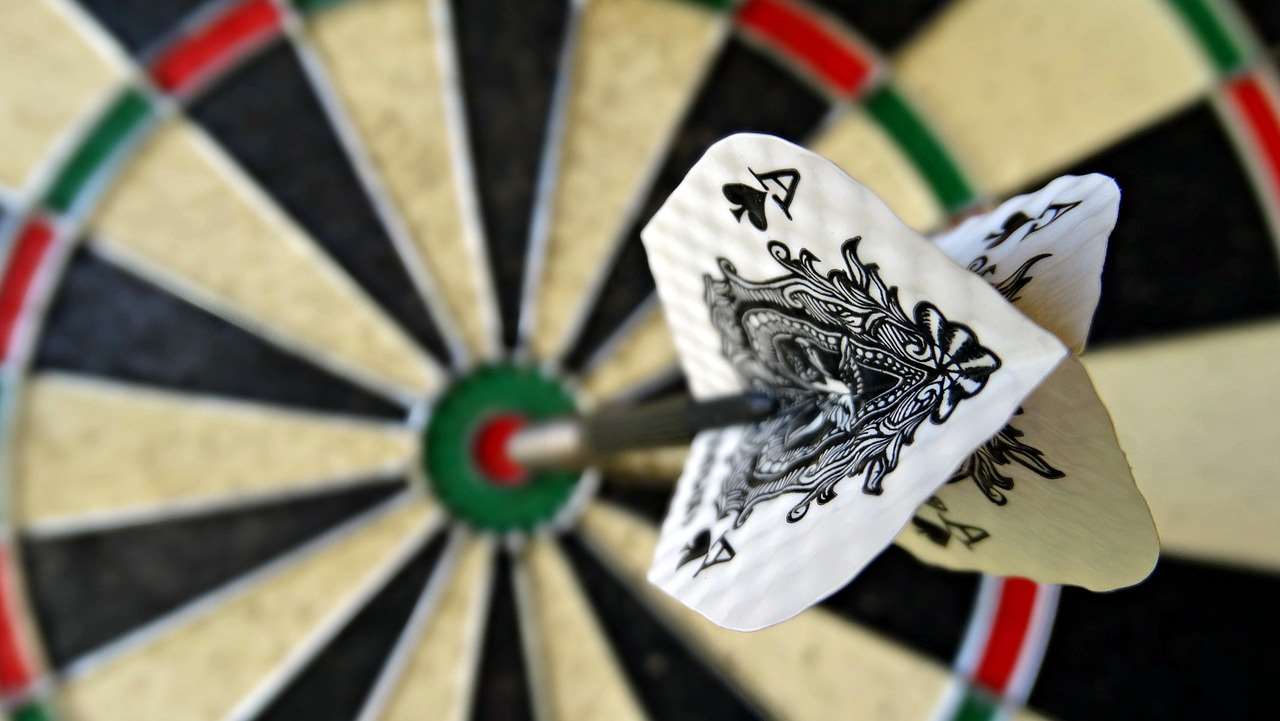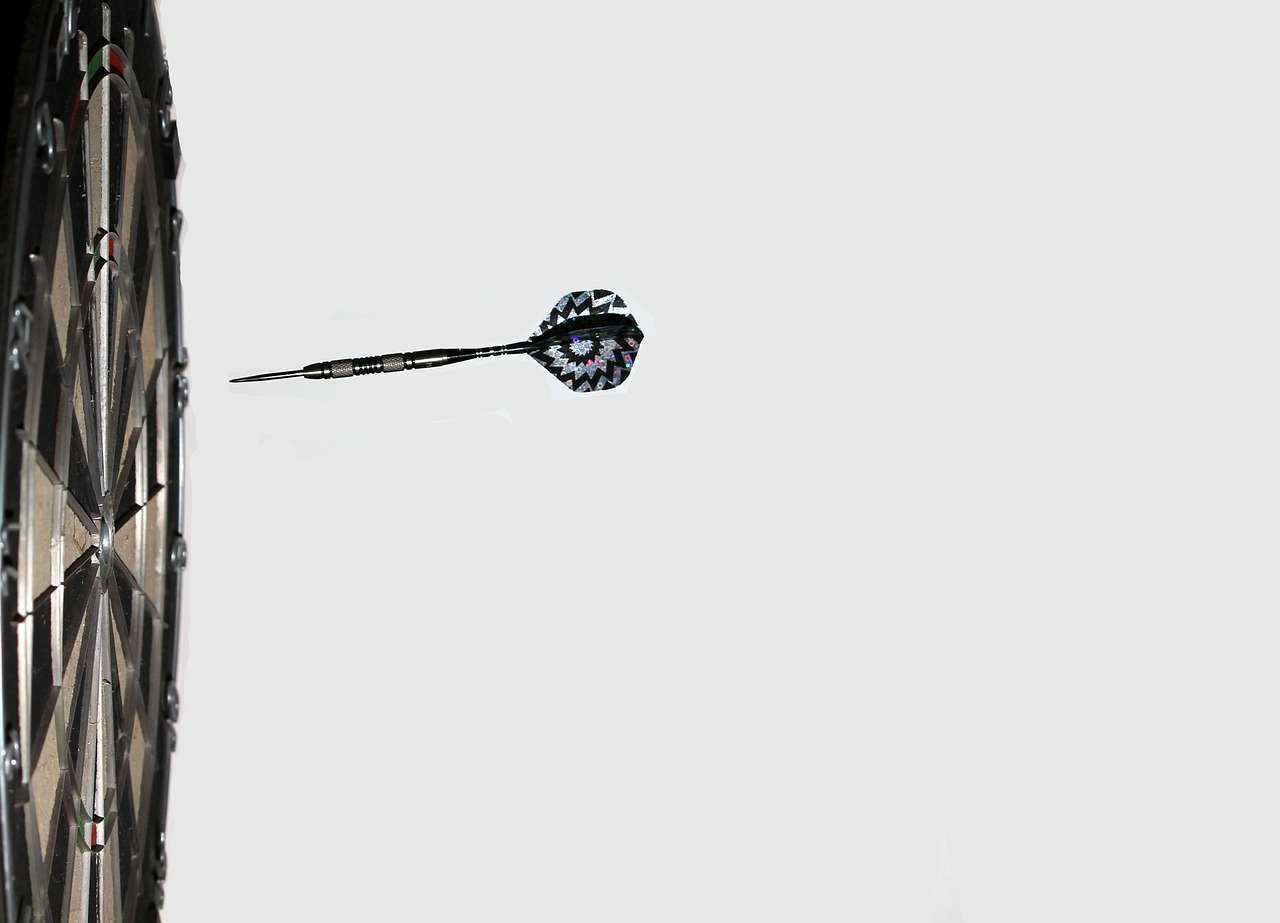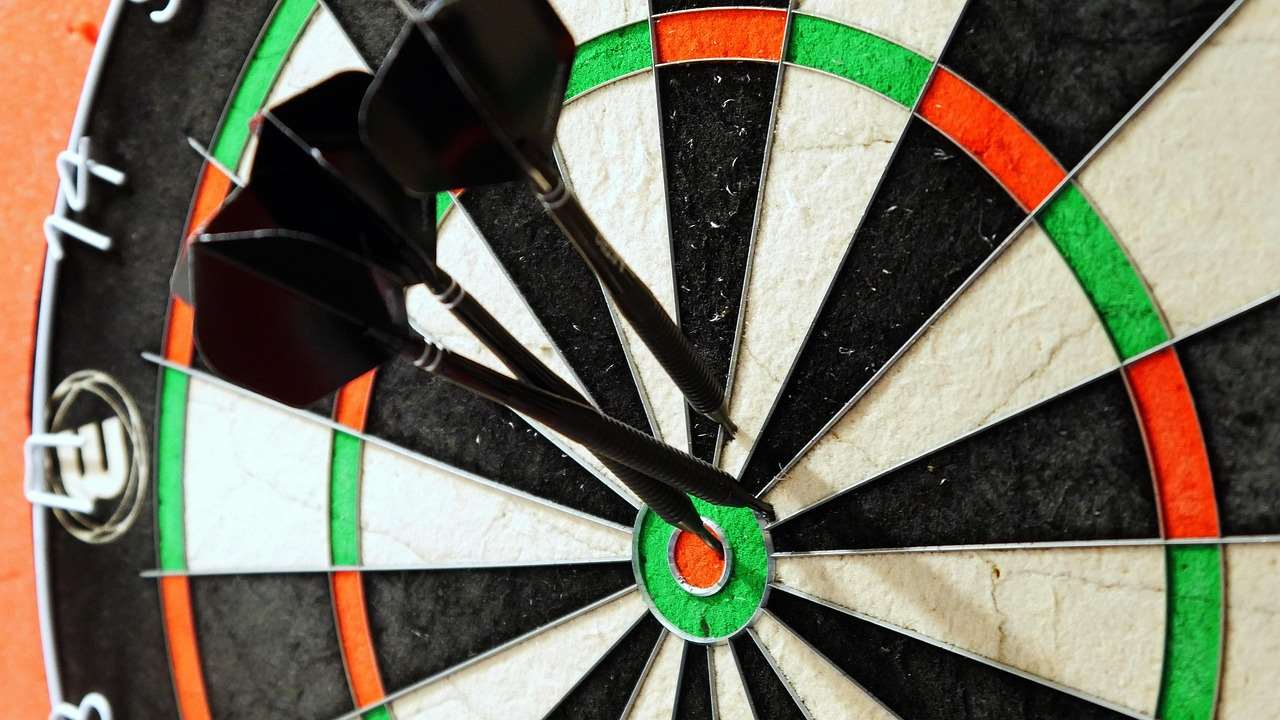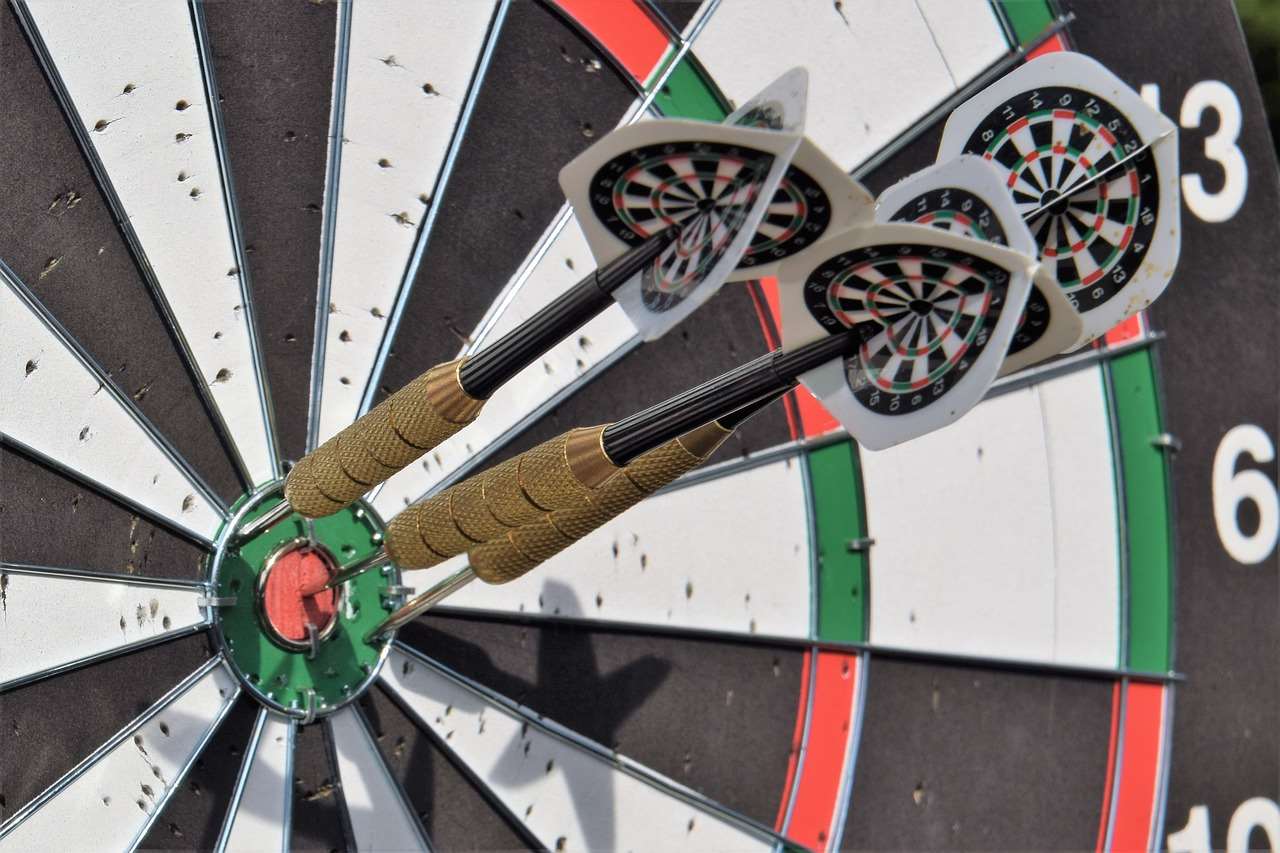A clean dartboard is crucial for consistent dart retention, leading to improved accuracy and a more enjoyable game. Cleaning your dartboard to improve dart retention involves more than just a quick wipe; it’s about understanding the materials and employing the right techniques. This article will guide you through the process, covering different cleaning methods and preventative maintenance, ensuring your darts stick where they should.
⚠️ Still Using Pen & Paper (or a Chalkboard)?! ⚠️
Step into the future! The Dart Counter App handles all the scoring, suggests checkouts, and tracks your stats automatically. It's easier than you think!
Try the Smart Dart Counter App FREE!Ready for an upgrade? Click above!
Regular maintenance is key to extending the life of your dartboard and ensuring optimal performance. A well-maintained board will not only improve dart retention but will also enhance the overall playing experience. This includes knowing how to clean various types of dartboards and understanding the signs of damage that might require more extensive repair or even replacement.
Cleaning Dartboard to Improve Dart Retention: A Comprehensive Guide
Many players overlook the importance of cleaning their dartboard, assuming a simple wipe-down is sufficient. However, dust, dirt, and even sticky residue from previous games can significantly affect how well your darts stick. Cleaning your dartboard to improve dart retention is a simple yet effective way to elevate your game.

The type of dartboard you have will influence your cleaning approach. Sisal boards require a different approach than bristle boards, and electronic boards have their own specific cleaning needs. We’ll delve into the specific cleaning methods for each type later in this article. Before we get started, let’s take a look at why cleaning is so essential. Neglecting this simple step can lead to frustrating bounces and inconsistencies in your game, directly impacting your overall score and enjoyment.
Why Clean Your Dartboard?
Beyond simply improving the aesthetics of your game room, there are several crucial reasons to prioritize cleaning your dartboard regularly. Firstly, accumulated dust and debris can create a rough surface, causing your darts to bounce off instead of sticking. Secondly, sticky residue from adhesives used in soft-tip darts can build up, impacting how your darts penetrate the board. Lastly, a clean dartboard ensures better dart retention, leading to improved scores and a more rewarding gameplay experience. This, in turn, encourages more regular play and enhances your overall darting skills.
Cleaning Different Types of Dartboards
The process of cleaning a dartboard to improve dart retention varies depending on the material. Here’s a breakdown of effective cleaning methods for common dartboard types:
Cleaning Sisal Dartboards
Sisal dartboards are popular for their durability and ability to hold darts well. However, they are susceptible to dust accumulation and damage from impacted darts. Regular cleaning is vital. Here’s how:
- Use a soft-bristled brush to gently remove loose dust and debris. A small, hand-held vacuum can also be useful.
- For stubborn dirt or residue, use a slightly damp cloth with a mild detergent (avoid harsh chemicals). Wring out the cloth well to prevent excessive moisture.
- Allow the board to air dry completely before playing.
- Consider using a specialized dartboard cleaner designed for sisal boards for deeper cleaning.
Remember to be gentle; harsh scrubbing can damage the sisal fibers. This can impact dart retention and shorten the board’s lifespan. Regular cleaning will prevent deeper stains and damage, extending the time before you might need to consider making an informed decision to replace vs. repair your dartboard.

Cleaning Bristle Dartboards
Bristle dartboards, while classic, require careful cleaning to maintain their integrity and dart retention abilities. Here’s how to clean them effectively:
- Use a soft brush or vacuum to remove surface dust and loose fibers.
- For deeper cleaning, you can use a damp cloth, but avoid saturating the board with water, as this can damage the bristles and lead to warping.
- Let the board air dry thoroughly. Excessive moisture can significantly reduce dart retention and even cause mold growth.
Bristle boards are more susceptible to damage from excessive moisture, so always allow for ample drying time. If you notice any significant damage, consider consulting a guide on dartboard damage repair.
Cleaning Electronic Dartboards
Electronic dartboards require a different approach. Never use harsh chemicals or excessive water, as this can damage the electronics. Here’s the recommended cleaning process:
- Use a slightly damp microfiber cloth to wipe the surface gently. Ensure it’s only slightly damp – wring out excess water thoroughly.
- Avoid getting any moisture into the scoring mechanism or the electronic components.
- Use a compressed air canister to remove dust from crevices.
- Always consult the manufacturer’s instructions for specific cleaning recommendations.
Because electronic dartboards contain sensitive electronics, it is always advisable to consult the manufacturer’s instructions before attempting any cleaning. Improper cleaning could lead to a malfunctioning unit and require costly repairs.
Preventative Maintenance for Enhanced Dart Retention
Cleaning your dartboard to improve dart retention is only part of the equation. Preventative maintenance plays a crucial role in extending its lifespan and ensuring consistent performance. Here are some key tips:
- Keep your dartboard in a dry, climate-controlled environment. Excessive humidity or dryness can negatively affect the board’s performance and could lead to faster deterioration.
- Use a dartboard surround or cabinet to protect it from damage and dust accumulation.
- Inspect your darts regularly and replace damaged or worn-out darts promptly. Using damaged darts can easily lead to reduced dart retention and could create unwanted wear and tear on the dartboard itself.
- Avoid throwing darts too forcefully, as this can damage the board and reduce dart retention. This is particularly true for softer bristle dartboards.
- Properly maintaining your other dart equipment also impacts the performance of your dartboard. Always ensure your darts and shafts are in good condition and regularly review the dart equipment troubleshooting overview to address any other issues affecting your game.
By incorporating these preventative measures, you can significantly extend the lifespan of your dartboard and consistently enjoy superior dart retention. Addressing any problems early on, and following appropriate dart equipment troubleshooting lessons, can help significantly reduce the need for repairs or replacement.
Troubleshooting Common Dart Retention Issues
Even with regular cleaning and maintenance, you might still encounter issues with dart retention. Here are some common problems and how to address them:
- Loose Darts: If your darts are consistently bouncing out, check if the points are blunt or damaged. Blunt dart tips do not penetrate the board properly, leading to reduced dart retention and poor performance. Consider sharpening your soft-tip darts or replacing them with sharp, new ones. You should also inspect your quality replacement dart shafts to make sure they are adequately attached and secure.
- Damaged Board Surface: Check for holes, tears, or worn-out areas on your dartboard. If you find extensive damage, it is time to assess the need for repair or replacement. A badly damaged dartboard will lead to inconsistent scores and impact your performance.
- Incorrect Dart Throw: Poor throwing technique can cause darts to bounce out. Practice your technique to ensure your darts strike the board correctly.
- Issues with Dart Shafts: Sometimes, issues with your dart shafts can cause darts to not embed fully. Consider exploring the pros and cons of short dart shafts and determine if your chosen shaft is the best fit for your darts and your throwing style. A poor fit here can also result in reduced dart retention.
Addressing these issues proactively helps you maintain optimal performance. Regular inspection and addressing problems promptly can save you significant frustration and time.

Remember, taking care of your dartboard is an investment in your game. By following these guidelines on cleaning your dartboard to improve dart retention, you’ll enjoy a more consistent, rewarding, and enjoyable darting experience. Don’t forget to check for any problems with your dartboard wire and numbers as well, as these can affect both the game and your overall enjoyment.
Conclusion
Cleaning your dartboard to improve dart retention is a simple yet effective way to enhance your dart-throwing experience. By understanding the different cleaning methods for various dartboard types and practicing preventative maintenance, you can ensure consistent dart retention and prolong the lifespan of your dartboard. Remember to always consult the manufacturer’s instructions for specific cleaning guidelines, especially for electronic dartboards. Take advantage of this guide and enjoy your enhanced dart-throwing experience, all while keeping your equipment in top shape!
Consider incorporating regular cleaning into your routine as part of your overall darting maintenance. Remember that proper care and maintenance will contribute to a more enjoyable and longer-lasting dart-throwing experience. By understanding the cleaning specifics for various types of dartboards and proactively maintaining your dartboard, you’re investing in your game. And don’t forget the importance of Darts Equipment Maintenance Customization for personalized care.

Invest in the longevity of your game and enjoy improved consistency and a better overall experience. Happy throwing!
Hi, I’m Dieter, and I created Dartcounter (Dartcounterapp.com). My motivation wasn’t being a darts expert – quite the opposite! When I first started playing, I loved the game but found keeping accurate scores and tracking stats difficult and distracting.
I figured I couldn’t be the only one struggling with this. So, I decided to build a solution: an easy-to-use application that everyone, no matter their experience level, could use to manage scoring effortlessly.
My goal for Dartcounter was simple: let the app handle the numbers – the scoring, the averages, the stats, even checkout suggestions – so players could focus purely on their throw and enjoying the game. It began as a way to solve my own beginner’s problem, and I’m thrilled it has grown into a helpful tool for the wider darts community.